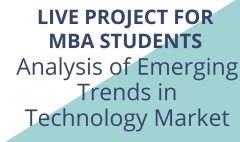Preserving Traditions
Preserving Traditions
In an era where globalization poses both opportunities and threats to cultural diversity, the preservation of cultural institutions is more crucial than ever. These bastions of heritage and tradition not only remind us of our historical roots but also guide communal identities and future aspirations. Herein lies the importance of MBA graduates, who bring to the table a plethora of skills and strategies poised to ensure the sustainability and vibrancy of these institutions.
Strategic Planning for Cultural Sustainability
MBA graduates are trained in the art and science of strategic planning, a critical component in ensuring the longevity of cultural institutions:
- Mission Clarity: By defining a clear, compelling mission, institutions can steer efforts and resources toward their core cultural objectives, ensuring consistency and focus in their initiatives.
- SWOT Analysis: Identifying strengths, weaknesses, opportunities, and threats allows cultural institutions to strategically allocate resources, capitalize on their unique assets, and mitigate risks.
Financial Sustainability
A robust financial model is the backbone of any successful cultural institution:
- Diverse Funding Sources: MBA graduates can help institutions diversify their funding beyond traditional methods, exploring grants, sponsorships, public-private partnerships, and more.
- Efficient Resource Management: Applying principles of financial prudence ensures maximal impact per dollar spent, reinforcing the institution’s stability and capacity for growth.
Engagement and Outreach
Maintaining cultural relevance requires institutions to actively engage their community and beyond:
- Marketing and PR: MBAs can leverage marketing strategies to enhance public visibility and engagement, elevating the institution’s profile and attractiveness.
- Educational Programs: Outreach initiatives, especially for the younger generation, help instill cultural appreciation and ensure a continuous audience and membership base.
Technology and Innovation
In a digital age, technology is a friend:
- Digital Archives: Employing technology in archiving allows for the preservation of artifacts, documents, and traditions in digital formats, safeguarding against physical deterioration or loss.
- Virtual Engagement: In times when physical access might be limited, virtual tours, online galleries, and interactive experiences keep the institution accessible and relevant.
Resources for Further Reading:
- American Alliance of Museums – Offers resources on best practices, sustainability, and strategic planning for cultural institutions. Website
- UNESCO’s Guide on Sustainable Cultural Tourism – Provides insights into preserving cultural heritage through sustainable tourism. Website
- National Endowment for the Arts – Offers support and resources for arts organizations. Website
In conclusion, MBA graduates, armed with strategic acumen and innovative foresight, are uniquely positioned to ensure that cultural institutions thrive. Through strategic planning, financial sustainability, community engagement, and technological adoption, they can help preserve the rich tapestry of our cultural heritage for future generations.








